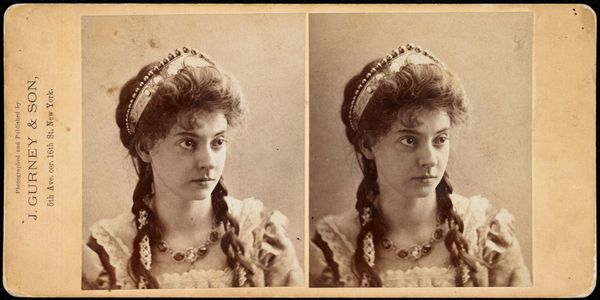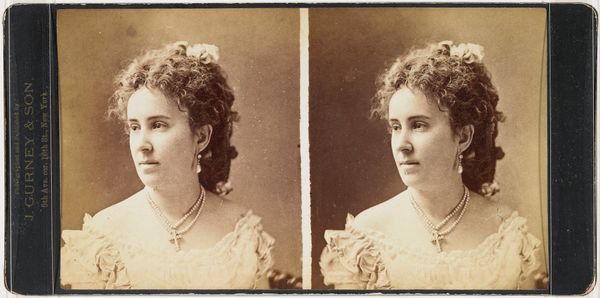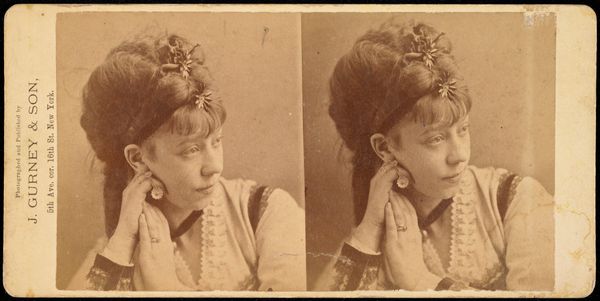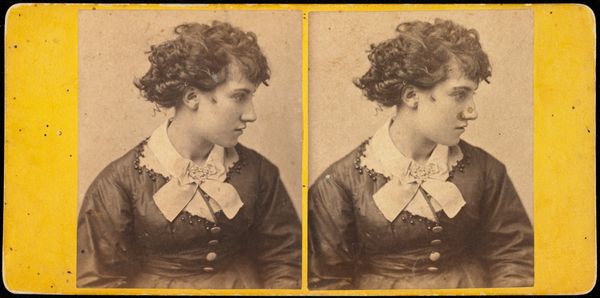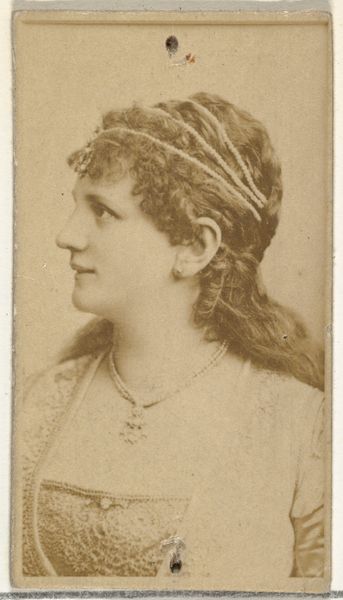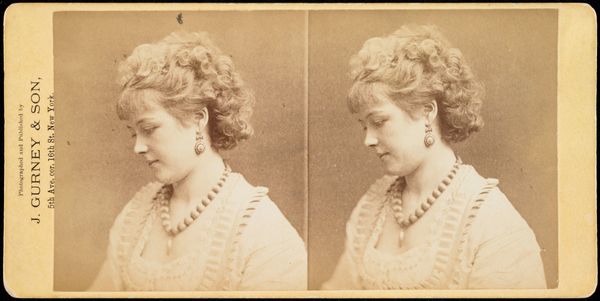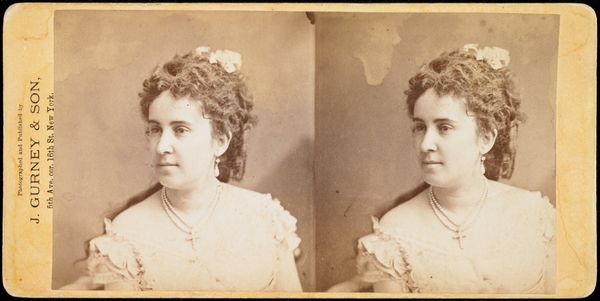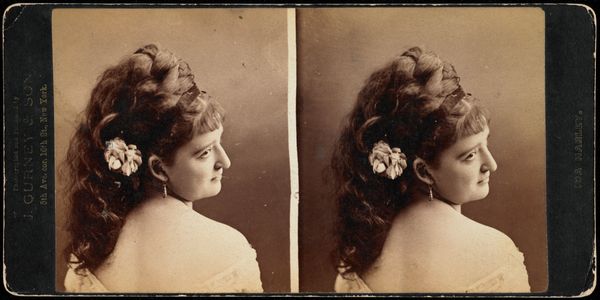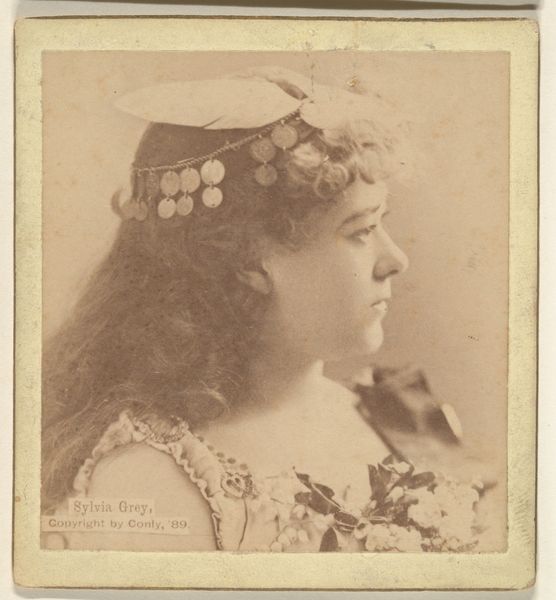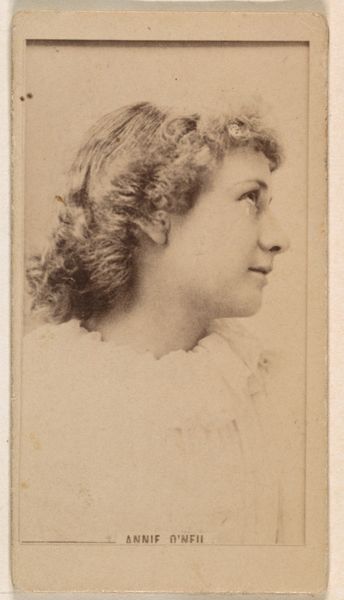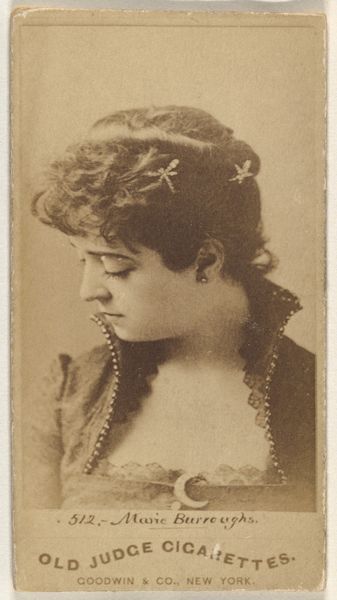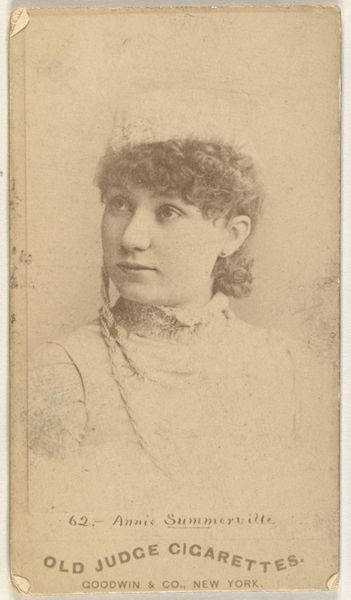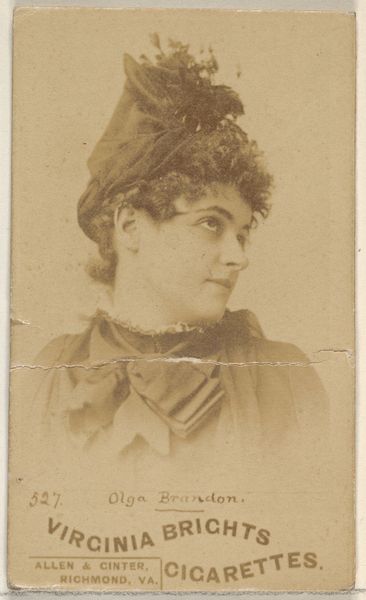
daguerreotype, photography
#
portrait
#
daguerreotype
#
photography
#
portrait art
#
realism
Dimensions: 3 1/4 x 2 9/16 in. (8.26 x 6.51 cm) (image, each)3 7/16 x 6 7/8 in. (8.73 x 17.46 cm) (mount)
Copyright: Public Domain
This stereograph was produced by Jeremiah Gurney, a pioneering New York photographer, likely in the 1860s or 70s. It’s made using the wet collodion process, a technique involving coating a glass plate with chemicals, exposing it in the camera, and then developing it immediately. What I find fascinating about this method is that it required both technical skill and speed; the whole process had to be done before the plate dried. The results, like this portrait, have a distinctive tonal range and a crispness that’s quite remarkable. The stereograph itself was a popular format, offering a 3D effect when viewed through a special device. This speaks to a growing market for accessible imagery during the period, feeding the appetite of a public keen to consume portraits and scenes from around the world. Looking at this image, you realize it’s not just a picture, but also the result of a complex interplay of chemistry, light, and human labor, all geared towards satisfying a widespread desire for visual representation. It reminds us that even early photography was deeply enmeshed with industrial production and consumer culture.
Comments
No comments
Be the first to comment and join the conversation on the ultimate creative platform.
